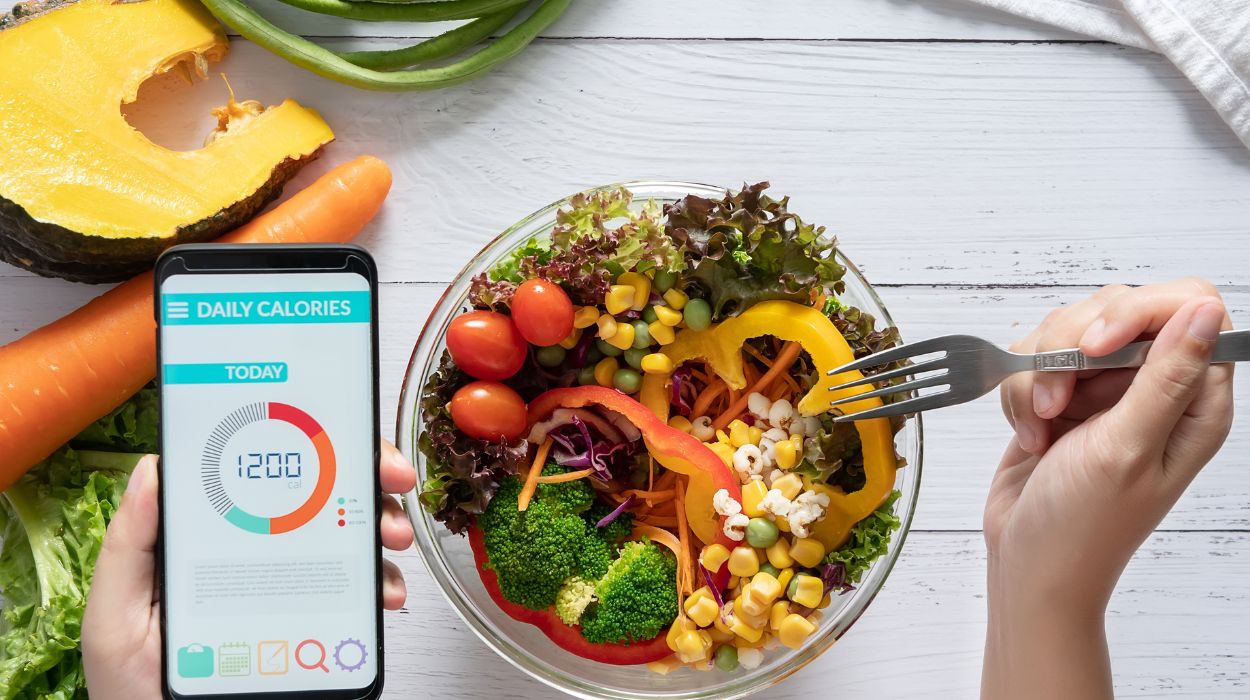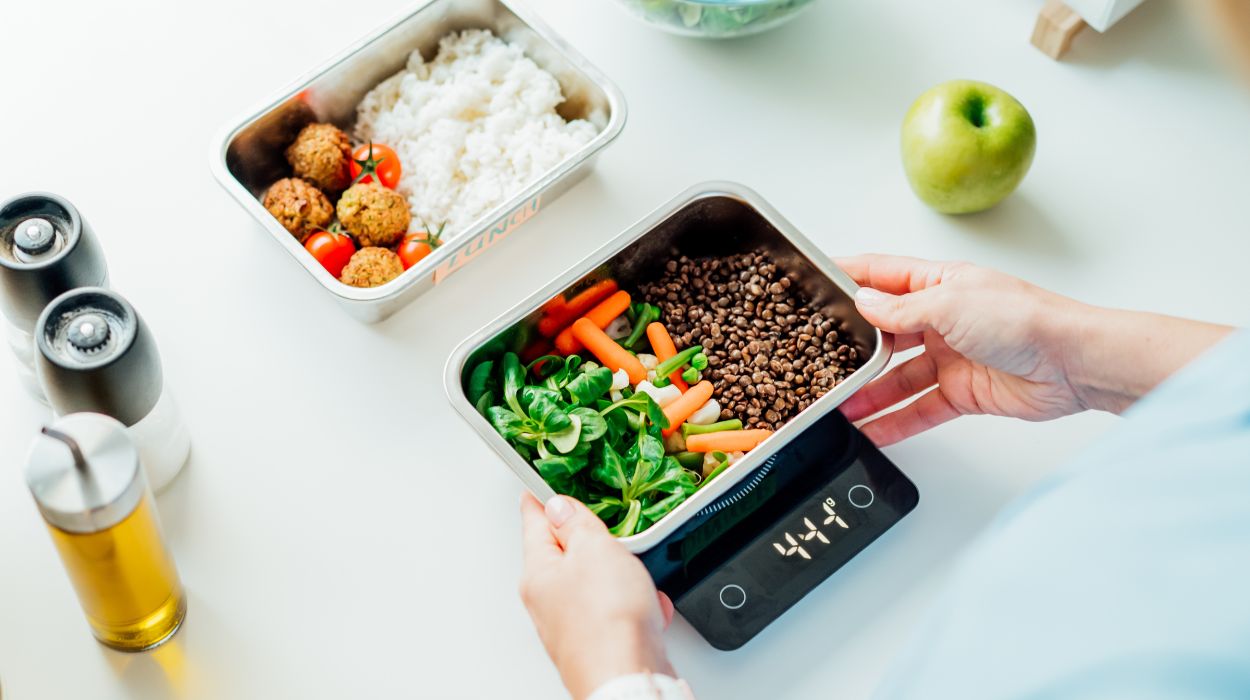Embarking on a weight loss journey can be exciting but daunting. You may feel invigorated by your commitment to live a healthy lifestyle, but may find that you have more questions than answers.
A common question is “How much of a calorie deficit do I need to be in to lose weight?” Losing weight boils down to calories in versus calories out. In order to lose weight, more calories must be burned than consumed.
Let’s take a look at everything you need to know to successfully achieve a calorie deficit and lose weight.
How Much Of Calorie Deficit To Lose Weight?
In order to lose weight, men and women should be in a calorie deficit of approximately 500-1000 calories per day. There are many factors that influence how many calories you need to eat to lose weight such as age, gender, body size and composition, activity level, and genetics. Generally speaking, a daily intake of 1200-1500 calories per day for women, and 1500-1800 calories a day for men will produce weight loss results.
How Much Of A Calorie Deficit To Lose Weight?

A simple internet can provide a variety of answers. There are a lot of different opinions, and it can be difficult to know what is based on scientific literature.
Generally speaking, a calorie deficit of 500–750 calories per day[1] is effective in creating healthy, long-lasting weight loss. This means the recommended average daily intake is 1200–1500 calories for women and 1500–1800 calories for men.
It’s common to be curious about how long it takes to lose weight once in a calorie deficit and when progress starts to show. During a calorie deficit, the aim should be losing about 1 kg every 2 weeks. In other words, sustainable weight loss that can be maintained long term.
In order to lose 1 kg, the body needs to burn about 7,700 calories. To lose 1 kg over the course of two weeks, you will need to average a daily calorie deficit of 550 calories. To lose 1 kg over the course of one week, then you will need to average a daily calorie deficit of 1,100 calories.
It may take some trial and error to find a calorie deficit that works well for each individual circumst
What Is A Calorie Deficit?
A calorie deficit is a strategy to achieve weight loss goals. A calorie deficit can be achieved by reducing calorie intake and increasing physical activity levels. When this is accomplished, the body will use its stored energy reserves to obtain the additional energy it requires.
At the beginning of a calorie deficit, the body will use up its stored glycogen.[2] This is what contributes to the initial loss of “water weight” in the early stages of a calorie deficit. Once the stored glycogen is used up, the body starts to get its fuel from stored fat or muscle. When the body burns said fat and muscle, weight loss occurs.
While it is expected to lose some muscle when in a calorie deficit, muscle-strengthening activities can help combat how much muscle is lost.
The current recommendation[3] for physical activity is at least 150 minutes of moderate-intensity aerobic activity or 75 minutes of vigorous aerobic activity per week. Adding in 2 days of moderate to high-intensity muscle-strengthening activity will aid in the preservation of muscle while losing weight. It is possible to lose weight without exercise, but combining a healthy diet with regular exercise will provide the best results.
How To Calculate Calorie Needs
In order to calculate caloric needs, a calculator like the Body Weight Planner[4] from the National Institutes of Health (NIH) can be used. Enter your weight, sex, age, height, and activity level. Add your goal weight and the timeline in which to achieve these results. The calculator will then estimate the number of calories you should eat per day to lose weight.[5]
The calculator will provide an approximate estimate to help with weight loss based on this information. However, you should consult with your healthcare professional before making major dietary changes.
Individual calorie needs is calculated based on Total Daily Energy Expenditure (TDEE). TDEE is based on basal metabolic rate (BMR), physical activity (PA), non-exercise activity thermogenesis (NEAT), and the thermic effect of food (TEF).
TDEE = BMR + PA + NEAT + TEF
- The basal metabolic rate is the number of calories the body burns at rest. This is the amount of energy it takes for the body to perform the basic functions of living. This includes burning calories while you are sleeping.
- Physical activity is the amount of exercise completed. This can range from very light to heavy.
- Non-exercise activity thermogenesis is the energy the body needs to perform all other movements (aside from physical exercise) such as cleaning your house, grocery shopping, or cooking.
- The thermic effect of food is the energy it takes the body to digest, absorb, and metabolize food.
In addition to counting calories, tracking macronutrients such as protein, carbs, and fat can help create a balanced diet. For instance, for people who try a ketogenic diet for calorie deficit, it may be helpful to learn how to calculate net carbs.
6 Tips For Eating Fewer Calories
Stay Hydrated
Drinking enough water throughout the day can aid in weight loss because water is a natural appetite suppressant and helps support your metabolism.[6] Even a mild level of dehydration can cause a decrease in metabolism, which leads to slower weight loss. The amount of water each individual needs per day can depend on a variety of factors such as activity level, age, and sex. While other beverages can be enjoyed, water helps you stay hydrated[7] when trying to lose weight while drinks such as juice and soda are high in calories and sugar.
Prioritize Protein
Eating a diet high in protein is effective for weight loss because it improves satiety. This should help in satisfying hunger and snacking after each meal. Eating a diet high in protein can also help preserve lean body mass during a weight loss journey. Good sources of protein include chicken, fish, turkey, beans, tofu, and dairy.
Eat Fiber-Rich Food
Eating a diet that is high in fiber can aid in feeling fuller for a longer period of time. Foods such as broccoli, carrots, bananas, peas, brussel sprouts, beans, oatmeal, and flax seeds are high in fiber and great for weight loss.
Focus On Volume
A low-calorie diet does not always mean less food. Low-calorie foods that are rich in fiber and nutrients can be enjoyed in higher volumes. This includes foods such as spinach, kale, broccoli, cabbage, berries, cauliflower, carrots, and much more. These high-volume foods can be paired with a high-quality source of protein for meals and snacks that can help increase satiety.
Avoid Calorie-Dense Foods
Limiting foods that are high in unnecessary calories is a given. If eaten in excess, it becomes harder or even impossible to maintain a calorie deficit or even cause a calorie surplus. Foods that are high in calories and should be avoided include oils and butter, nuts, fatty meats, sugary sweets, and fried foods.
Meal Prep
A great way to support weight loss goals is to prepare meals in advance. Spending a few hours on the weekend preparing nutritious meals and snacks for the week ahead can help build a routine. This eliminates the need to default to carry out or fast food. Planning meals in advance can also reduce the urge to resort to “unhealthy” snacks and replace them with nutritious snacks.
Why Is A Calorie Deficit Important For Weight Loss?
Simply put, weight loss requires a calorie deficit; a calorie deficit is essential for weight loss.
Tracking calories also helps you to choose nutritious foods and keeps you accountable.
Conclusion
Understanding what a calorie deficit is and the correct number to achieve a calorie deficit is one of the first steps in achieving weight loss. Additionally, creating a meal plan and fitness routine can increase success in achieving a weight loss goal. Consulting a primary care physician or a registered dietician who can provide further guidance during your weight loss journey.
Frequently Asked Questions
A 1200-calorie deficit can be appropriate for some people who are trying to lose weight. However, this should be achieved through a combination of diet and exercise, otherwise a deficit from diet alone can potentially slow down your metabolism and cause other issues.
In order to lose 1kg, the body needs to burn about 7,700 calories. To lose 1 kg over the course of two weeks, the average daily calorie deficit is 550 calories. To lose 1 kg over the course of one week, the average daily calorie deficit is 1,100 calories.
Yes, it’s possible to lose 5 kg in a month by walking. If you walk at a moderate to vigorous intensity and combine that with a diet that results in a caloric deficit, weight loss is achievable.
Possibly. Walking for 1 hour a day can help you achieve your weight loss goals. A 1-hour walk, depending on intensity, can burn anywhere from 300-600 calories.[8] Coupling a 1-hour walk with a healthy diet can help improve weight loss results.
This depends on a variety of factors, including current weight, physical activity, diet, genetics, and other factors. A gradual weight loss regimen is about 1 kg every 1-2 weeks. At this rate, it can take up to 30 weeks. Talk with a healthcare professional if you have questions about creating a weight loss plan that works best for you.

